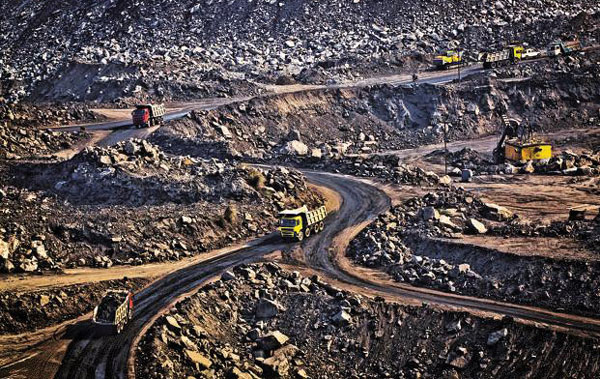STRUCTURE OF THE UN ITED STATES STEEL INDUSTRY
This section describes the domestic market structure.
The dimensions of market structure are: (1) the number of
sellers and their relative size, (2) major markets and end uses,
(3) the degree of vertical integration, and (4) the extent of
diversification. We will cover each of these. In addition,
we will review the steel import situation of the United States
and briefly trace recent developments aff~ti'ng or likely to
affect the international competitiveness of the U.S. steel
industry. An understanding of these elements will provide a
background for the hypotheses to be discussed in the remainder
of the study.
The steel industry is of major importance to the U.S.
economy, producing goods essential to expansion of the manufactur ing sector. The industry contr ibuted $12.7 billion to
national income in 1972, amounting to 5.0 percent of U.S. manufactur ing income and 1.4 percent of income from all industr ies
(see table 2.13). Further, it should be noted that the percentage attributed to steel has been steadily declining as a
proportion of both total manufacturing and all industries.
Members of the steel industry fall into three broad
categories, production similarities serving as the basis of
classification. These categories are somewhat arbitrary,
. however, since many steel products can be produced by al ternative processes. Later discussions will blur the distinction
of three relatively clear-cut segments of the industry, since the major steelmakers operate steelmaking plants of every
possible var iety including integrated, specialty, and ferrous
scr ap based un i ts.
The first segment is the major vertically integrated
producers of steel, operating co~e ovens, blast furnaces,
steelmaking furnaces, and rolling and finishing facilities. ll/
It is bel ieved that the integrated firms product mix consists
of heavier tonnage but lower valued prod~çt~ than industry
average because some of the smaller firms specialize in such
high valued products as stainless and tool steels or sell a
large proportion of fabricated items. The second segment is
the minimills that do not make their own pig iron, but rely on
scrap or pre-reduced ores to make a limited range of products.
The third segment is the producers that have no furnace facilities but start with semi-finished product and specialize in the
finishing process itself~ The specialty and alloy steelmakers are
considered a different segment of the industry because they mönufacture higher value products and a narrower range of products.
Number and Relative Size of_companies
Domestic establishments primarily engaged in the production. of crude iron and steel are classified by the Bureau of
the Census in the nine subdivisions shown in table 2.14. The
14/ Many integrated steel producers in the United States also
receive a large part of their iron ore and coking coal from mines
owned and operated by them or owned and operated jointly with other
companies.
-43-
largest category is the 4-digit Standard Industrial Classifi- ',~
cation (SIC) code 3312, -blast furnaces and steel mills. n
Approximately 58 percent of the employees and nèarly 67 percent
of the value of shipments come from establ ishments in this
category. In all, there are 241 companies with 364 establishments in this category. Twenty companies are fully integrated
producers (as defined in the Census ~ Manufactures),
operating
. l-~ .
39 fully integrated plants and accounting for 53 percent of the,
value of industry shipments in 1972. 15/
Table 2.15 shows concentrátion ratios in the blast furnaces and steel mills category (SIC 3312) computed by the Census
Bureau for the census years on the basis of value added. These
data disclose that the U.S. steel industry is characterized by
slowly declining concentration over time at the 4-firm level.
AS table 2.15 also indicates, the number of steel companies
rose from 148 in 1958 to 241 in 1972. This increase was due
to an increase in the number of small firms on the industry
"~ringe. About 40 miniplants have been built since 1960, and
they are becoming increasingly important in the industry. 16/
The industry with a simple 4-firm national conentration of 45
(
percent in 1972 tends to be only slightly mor'e concentrated than
U.S. manufacturing generally. Table 2.16 shows the distribution

